
There was a groundswell of support for an improvement in the commissioning of heat interface units (HIUs) at CIBSE Journal’s latest roundtable. Better education and enhanced skills were cited as key to improving the design of HIUs in heat network systems, as well as their installation.
The April event in London, which focused on optimising HIUs in district heating systems, was sponsored by Ideal Heating – Commercial Products. Among the topics discussed were: high return temperatures and poor efficiencies in energy centres; lack of consistency in design teams; and the latest updates to testing criteria for HIUs.
HIUs have many benefits. They offer individual heat control, energy efficiency, and cost savings by allowing residents to adjust temperatures according to their needs. They provide flexibility by accommodating different heat sources and integrating renewable energy technologies.
They ensure a reliable supply of hot water to each dwelling and enable system monitoring for optimisation and maintenance.
Overall, HIUs can enhance comfort, minimise waste, and promote more sustainable heating systems but they have to be integrated into heat network systems properly for performance to be fully optimised.
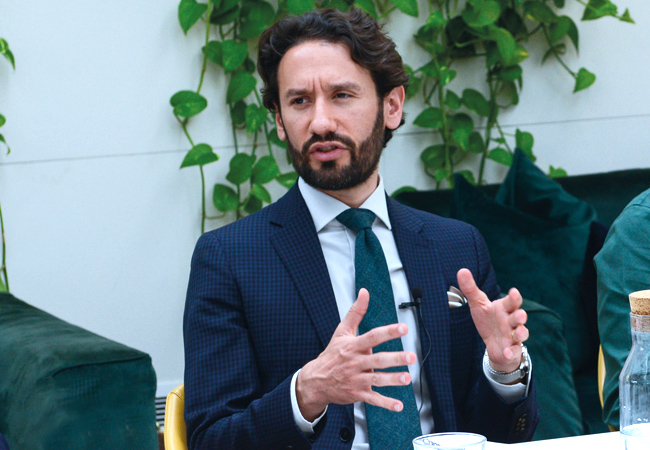
It’s very brave to suggest to clients that a project doesn’t have to be all-electric and that it’s acceptable to propose other solutions- Jairo Jaramillo
Ben Farmer, principal design engineer at Metropolitan, highlighted the relationship between energy centre performance and commissioning of HIUs. He said that high return temperatures and poor efficiencies in some of the schemes he has worked on usually start with HIUs. ‘It’s vital we get HIUs set up correctly and performing as intended. If it’s not done properly, it can hold up a scheme and developers can’t hand over on the timescales they want.’
Farmer added that design teams are winning work when they have no history of a project, and the client’s project personnel are also changing. This means vital information is not being transferred from one project to the next. ‘It’s like swimming upstream all the time; some headway is made, but suddenly a strong current comes along and you’re almost back to where you started,’ he said.
Hugh Dugdale, associate principal at Introba, agreed, and said that it’s often because of the way contracts are broken down. ‘We are employed to design the primary plant up to the HIU and then the apartment is handed over to another consultant; those two interfaces are not working well together,’ he said.
Dugdale argued that people don’t understand the complexities of a primary system, which is very dynamic, and that knowledge isn’t carried through in the way contracts are executed. These problems stem from a lack of education and information on HIUs, added Farmer. ‘Something as fundamental as design flowrates aren’t being provided at a detailed design stage; critical information is not being passed through from design to commissioning,’ he said.
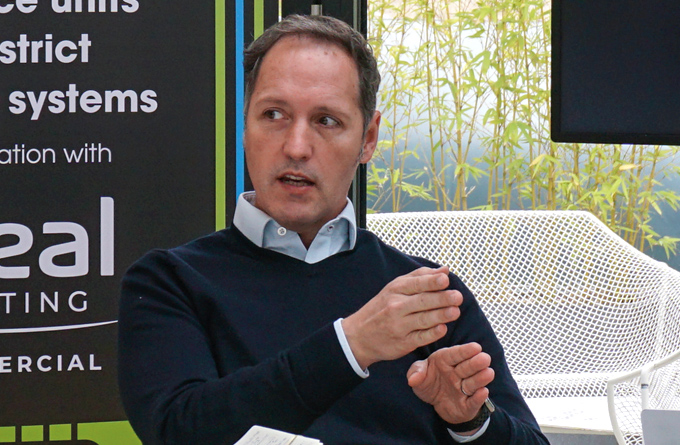
We’ve got a big industry issue around skills and commissioning… we need better education on how these systems work – Gareth Jones
Gareth Jones, managing director at FairHeat, supported this view. ‘We’ve got a big industry issue around skills and commissioning,’ he said. ‘When we look at the original setup to make sure HIUs have been installed correctly, we often see that they have been recommissioned because there’s been a wave of poor performance across the heat network. We need better education on how these systems work.’
Jairo Jaramillo, associate mechanical engineer at HDR, has had similar experiences. ‘On larger residential schemes with bigger budgets, the commissioning consultant holds your hand throughout the whole process and it’s a very well-documented approach,’ he said.
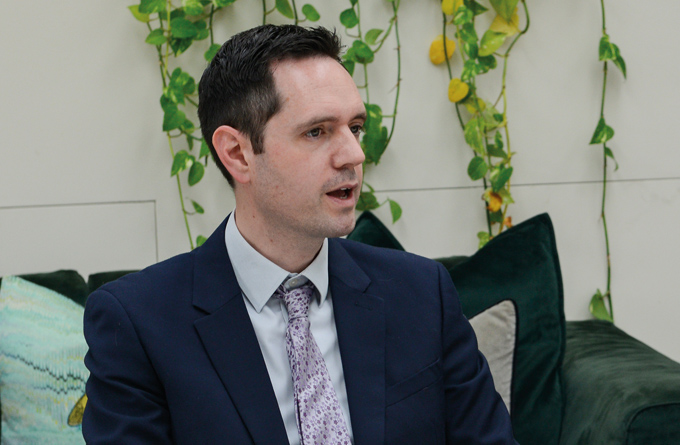
Something as fundamental as design flowrates aren’t being provided at a detailed design stage; critical information is not being passed through from design to commissioning – Ben Farmer
‘Then there’s the other experience, which is completely haphazard. Most of our fee will be from stage two to four, and at stage five. It’s still our responsibility, but we have less input. We watch our carefully designed systems getting installed and commissioned in a poor manner, resulting in inefficient heat networks.’
Michael Benbow, senior engineer at Buro Happold, argued that more engineers are needed to design correctly to ensure there are fewer issues. ‘We need better education at consultant level, to design and commission HIUs,’ he said. ‘That gives installers the opportunity to get the figures, temperatures and efficiencies that were designed.’
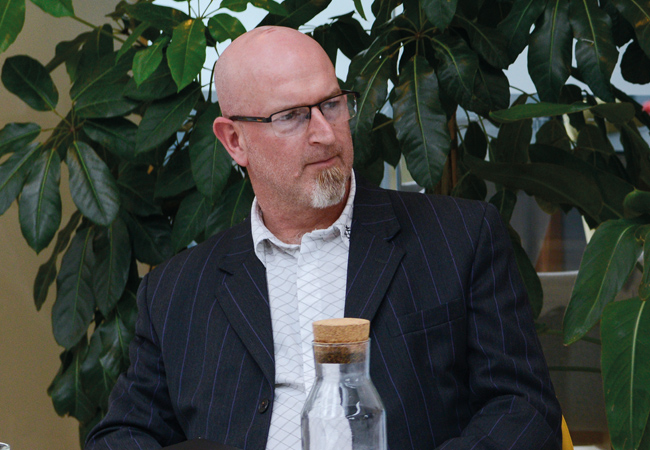
Having a broader range of BESA HIU tests increases the amount of knowledge that people will have when considering HIUs and will enable better selection for the right application – Charlie Mowbray
Unlike traditional heating appliances, which require registration with a body, there isn’t a scheme or certification required for commissioning HIUs, said Charlie Mowbray, senior product manager at Ideal Heating Commercial, part of Groupe Atlantic. ‘The industry could develop training schemes and opportunities to certify people so they have a greater depth of knowledge, or develop a similar benchmark scheme to the one for boiler installation.’
Jones, who chairs the UK HIU steering group and technical committee for BESA, and is technical lead on the Heat Network Technical Assurance Scheme, said a skills gap has been flagged as a serious issue and a team is looking at this. ‘The feedback from people on the skills course is that standards need to be in place first,’ he said. ‘What we will probably see is an evolution – the standards will come first, requirements will be made, and then courses will follow.’
A technical assurance scheme minimum standard for heat networks has also been proposed, added Jones. This means all heat networks will need to be certified and this will come into force, alongside the regulations, towards the end of 2024. Designers will have to produce better designs, contractors will have to install better networks, and operators will have to improve in-use performance.
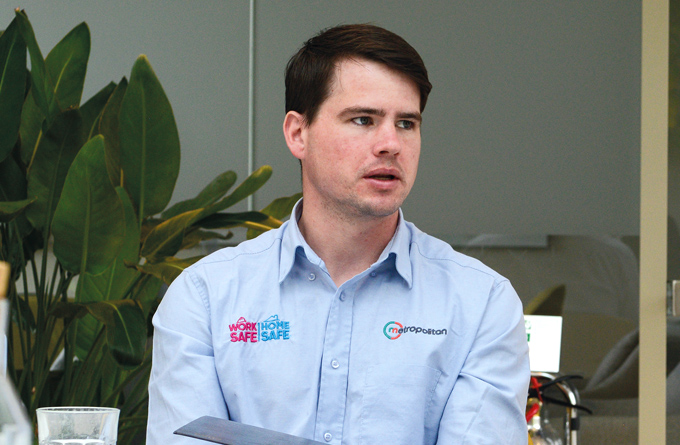
How do we optimise the system to be cost-effective, while also considering constrained issues?– Robert Temlett
Jones outlined some of the proposed updates to the BESA HIU testing regime. There will be a move towards a modular system, whereby domestic hot water (DHW)and space heating will be tested separately. Initially, seven HIU types will be allowed, including direct and indirect, and there will be pass or fail criteria, minimum standards will be set, and the number of tests will be changed. ‘The one big change will be the temperature regimes,’ said Jones. ‘In preparation for heat pump systems, the lower temperature will shift from 70°C to 55°C, which will be a challenge on the performance of DHW, particularly relating to response time and temperature stability.’
Mowbray was enthusiastic about the updates to HIU testing. ‘To have a pass or fail criterion is like a line in the sand; there’s no grey area any more,’ he said. ‘Having a broader range of tests increases the amount of knowledge that people will have when considering HIUs and will enable better selection for the right application.’
The ambition of the minimum requirement for HIUs is for people to do better, stressed Jones – but it must be achievable. Consultants need to look at the information available that shows how HIUs perform; for example, DHW temperature stability at low flowrates should be considered. Jones added that operating data needs to be available that shows the performance of HIUs in situ.
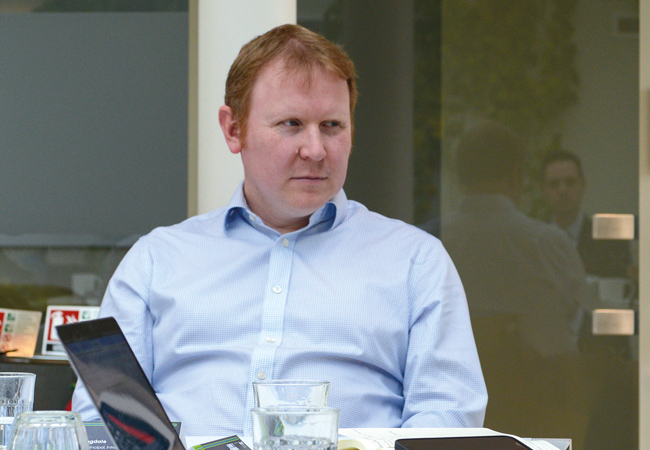
People don’t understand the complexities of a primary system, which is very dynamic, and that knowledge isn’t carried through in the way contracts are executed – Hugh Dugdale
Dugdale agreed that data based on reality is key, and said that, in his work, there has been a massive call for anonymous data that relates to the net zero carbon building standard. ‘We’ve had a very good response and are at a stage where anything meaningful is being extracted,’ he said. ‘Hopefully, a lot of the stuff in the standard will be based on that data collection.’
Dugdale doesn’t yet know how this standard will work with heat networks, but from the data studied so far, he thinks direct HIUs will potentially reduce the embodied carbon more than indirect HIUs.
The discussion turned to the opportunities of retrofitting HIU systems. According to Jones, this process can be straightforward, involving installing heat pumps pipes through the building, removing the gas boiler, and replacing it with an HIU. FairHeat had successfully put a 55°C heat network into a 50-year-old building, he said, and it has a good template for end-of-life gas boilers. When asked what the plant room implications are of changing from gas combined heat and power (CHP) systems to heat pumps for existing HIUs, Jones said operating temperature is the important consideration.
‘The good news is that the industry has been so cautious to date that almost all the systems, including radiators, are oversized and loads have been estimated to be too high – which means heat network temperatures could be dropped and it will be fine,’ he added. ‘The real challenge though is generating DHW but most of the time there is a way through this.’

We need better education at consultant level to design and commission HIUs properly – Michael Benbow
Farmer echoed Jones’s comment about oversized systems. ‘They are massively oversized,’ he said. ‘We’re involved with Buro Happold in high-rise housing projects that date from 2016, where we are removing gas as a primary source of heat generation and putting in heat pumps. The challenge we had was dropping temperatures and working out what the impact would be.’ However, in most heat networks that employ electric heat pumps, gas boilers are still used as backup, added Jones.
Jaramillo suggested there shouldn’t be one size fits all and reliance on a single energy vector. ‘It’s very brave to suggest to clients that a project doesn’t have to be all-electric and that it’s acceptable to propose other solutions,’ he said.
Robert Temlett, senior design engineer at Metropolitan, questioned whether key performance indicators will be monitored as part of the proposed certification of heat networks. ‘We had a huge problem where the industry was pushing CHP and gas boilers, and the CHP just sat in the corner and did nothing. The challenge is, how do we optimise the system to be cost-effective while considering constrained issues?’
Jones said engineers must be aware that a lot of heat networks being installed are communal or semi-communal, and the developer-led networks are quite small. ‘In 20 years’ time that kit probably won’t be there,’ he said. ‘We will have a heat network coming through and will connect to it from these big urban centres.’
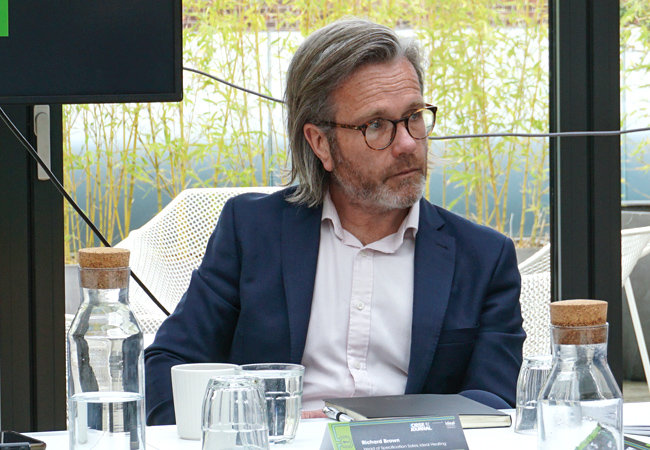
We have plans to help close the skills gap. We’re building a R&D facility and we have a new training facility. There is so much going on – Richard Brown
With new heat network regulations and the industry committed to upskilling workers, the foundations are being laid for the large-scale roll out of high performing heat networks and HIUs. Ideal Heating – Commercial Products is among companies helping to close the skills gap and increase innovation and performance in the sector. ‘We’re building a research and development facility, and we have a new training facility in Hull. There is so much more going on,’ says Richard Brown, head of specification sales at Ideal Heating – Commercial Products. ‘We had HIUs for several years. We need to get the message out there.’
